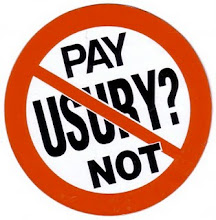By Jessica Barrett
Dreams of an alternative economy live on with a do-it-yourself currency.
Jordan Bober doesn’t wear a suit, have the backing of national banks or command the ear of the nation. In fact, rolling up to a Commercial Drive café on his bicycle, the 29-year-old bears little, if any, resemblance to Mark Carney or Ben Bernanke. Bober does have one thing in common with those men, however: they’re all in the business of printing money.
Or rather, Bober hopes soon to be. “It depends on how quickly the money can be printed,” says the economics graduate, who wrote his master’s thesis at the University of Gothenburg, Sweden, on community currencies. “We’re looking at – in terms of numbers of bills – between 20,000 and 30,000 bills in our first run.”
It’s not Canadian dollars Bober is planning to circulate; it’s Seedstock, a business-backed community currency he’s convinced will strengthen independent businesses in Vancouver, bolster the local economy and benefit non-profits. Based on a B.C. invention – the Community Way dollar of the Comox Valley – Seedstock depends on the involvement of local businesses, which literally create money out of thin air when they agree to accept the currency for partial payment of goods or services. A business can issue 1,000 Seedstock credits, each of which has the same value as the Canadian dollar, per full-time employee, and send it out into the community through a non-profit organization. Businesses donate their community cash to a participating charitable organization that pushes Seedstock into the community in a variety of ways: giving it to volunteers or donors as a reward, using it to buy goods or services from participating businesses or exchanging it for Canadian dollars with a willing individual.
The benefit to businesses, Bober says, comes when Seedstock returns, bringing with it patrons who might otherwise have passed them by, as well as the Canadian dollars they’ll use to top-up payment. (Businesses can choose what percentage of payment they’ll accept in Seedstock.)
The idea isn’t to replace the government-backed loonie, says Bober, but to free up capital for independent businesses and widen the razor-thin margins that drag so many under. “The point for businesses is to utilize their spare business capacity.” For a restaurant, that could mean filling empty tables, for a retailer, selling old stock faster and for a service provider, adding to the client roster.
As of September, Bober had signed on about 30 businesses in east Vancouver, mostly grocery stores, cafés and independent professionals. The program, which will be administered through his newly established Agorabora Collaborative Community Co-operative, aimed to launch by late October, with the first run of bills worth between $150,000 and $250,000.
Bober admits it’s been a tough sell. He has already abandoned one attempt: the Dunbar Dollar, its failure largely a result, he says, of reluctance among residents in the tiny neighbourhood to support the endeavour. By trying again in east Vancouver, Bober is banking on a stronger buy-local ethos and a growing disillusionment with the globalized banking system to rally a critical mass.
Still, the concept of alternative currency is foreign to most business owners, even if alternative economic schemes have been around for centuries. “Money is nothing but trust, right?” points out Werner Antweiler, a professor of strategy and business economics at UBC’s Sauder School of Business. The paper it’s printed on, he says, is a promissory note “that symbolizes the trust we have that someone is going to give you something for this piece of paper.” In addition to the Comox Valley’s Community Way dollar in the early 1980s, and Saltspring Island, which issued its own dollars in 2000, recent local examples include Fernie, Kimberley and Nelson.
According to Antweiler, alternative currencies typically pop up for two reasons: to take the place of failed currencies or, like Seedstock, to support charities and local businesses. The latter use has yet to gain widespread acceptance.
And due to the inherently restrictive nature of local currencies, which force consumers to shop locally, Antweiler doesn’t see them entering the mainstream anytime soon. Most of the value in local currency lies in its social, not economic, capital. “It’s simply beneficial in fostering a local community,” he says. “It will always have a role in a group of committed participants. It will not pass into the mainstream, to put it another way.”
Bober, who has worked on the project for nearly a year and a half (full-time for the last nine months), refuses to be dissuaded. With a wealth of underutilized talent and skills within its notoriously pricey city limits, Vancouver, he is adamant, is ripe for a large-scale local currency project to succeed.
“I see business turnover on Commercial Drive all the time,” he says. “I fear that a lot of businesses are on the brink of closing down. If credit were to ever freeze up, Vancouver would have no jobs whatsoever.”



0 Comments:
Post a Comment
<< Home